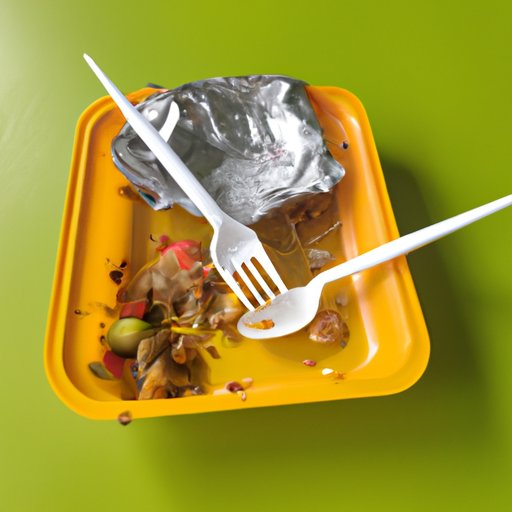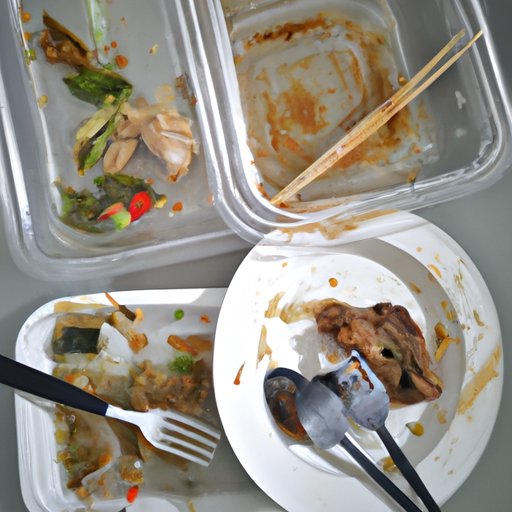Introduction
Leftovers are a great way to save time and money in the kitchen, but it’s important to know how to safely store and reheat them so they don’t become a food safety hazard. In this article, we’ll explore how long you can eat leftovers, and provide tips on how to store and reheat them safely.

How to Safely Store and Eat Leftovers
When it comes to storing leftovers, the key is to cool them down quickly and store them in an airtight container in the refrigerator. It’s best to divide large amounts of food into smaller portions before refrigerating, as this will help the food cool faster. You should also label and date any containers that contain leftovers, as this will help you keep track of when they were made and when they need to be used by.
When it comes to eating leftovers, the best practice is to consume them within three to four days. This will ensure that the food is still safe to eat and hasn’t lost its flavor or texture. If you’re not sure if your leftovers are still good to eat, it’s best to discard them and cook something fresh.
How Long Can You Reheat Leftovers?
Reheating leftovers can be tricky, as there are several factors that can affect how long it takes to reheat them. The type of food being reheated, the size of the portion, and the method of reheating all play a role in how long it will take to heat up the leftovers. Generally speaking, most leftovers can be reheated in a few minutes, but some larger items such as roasts may take longer.
The best way to gauge how long it will take to reheat leftovers is to use a food thermometer. Insert the thermometer into the center of the food and wait until it reaches 165°F before serving. Here are some suggested reheating times based on the type of food:
- Pasta dishes: 2-3 minutes
- Meat dishes: 4-5 minutes
- Casseroles: 7-8 minutes
- Soups: 10-12 minutes
What Temperature Should I Heat My Leftovers To?
When reheating leftovers, it’s important to make sure they reach an internal temperature of 165°F. This temperature will help kill any bacteria that may have grown while the food was stored in the refrigerator. The best way to monitor the temperature is to use a food thermometer, and make sure to insert the probe into the center of the food.
If you don’t have a food thermometer, you can also check the temperature of the food by touching it. The food should feel hot to the touch, and should not be lukewarm or cold. Additionally, make sure to stir the food frequently while reheating to ensure that it heats evenly.

Tips for Eating Leftovers Without Spoiling
When it comes to eating leftovers, there are a few best practices that can help ensure that the food doesn’t spoil. First, make sure to store the leftovers in an airtight container in the refrigerator, and consume them within three to four days. Additionally, make sure to reheat the food thoroughly before consuming, and use a food thermometer to check the temperature.
Finally, it’s important to avoid cross contamination when handling leftovers. Make sure to use separate cutting boards and utensils for raw and cooked foods, and wash your hands thoroughly before and after handling the food.
The Benefits of Eating Leftovers
Eating leftovers has a number of benefits, including cost savings, environmental benefits, and health benefits. For starters, eating leftovers can help you save money, as you won’t need to buy as much food each week. Additionally, eating leftovers can reduce food waste, which is beneficial for the environment. Finally, eating leftovers can be healthier than eating out, as you can control the amount of fat, sugar, and sodium in the food.
Conclusion
Leftovers can be a great way to save time and money in the kitchen, but it’s important to store and reheat them properly. When it comes to how long you can eat leftovers, the general rule is to consume them within three to four days. Additionally, make sure to reheat the food thoroughly before consuming, and use a food thermometer to check the temperature. Finally, eating leftovers can offer a number of benefits, including cost savings, environmental benefits, and health benefits.
(Note: Is this article not meeting your expectations? Do you have knowledge or insights to share? Unlock new opportunities and expand your reach by joining our authors team. Click Registration to join us and share your expertise with our readers.)
